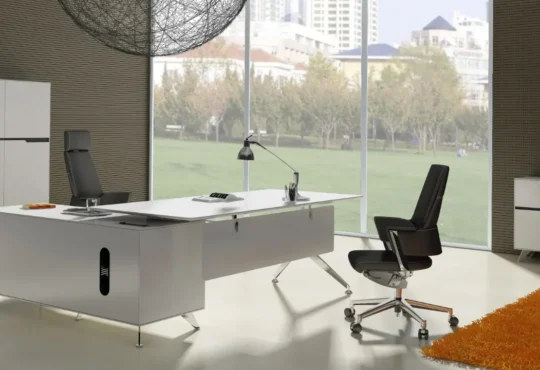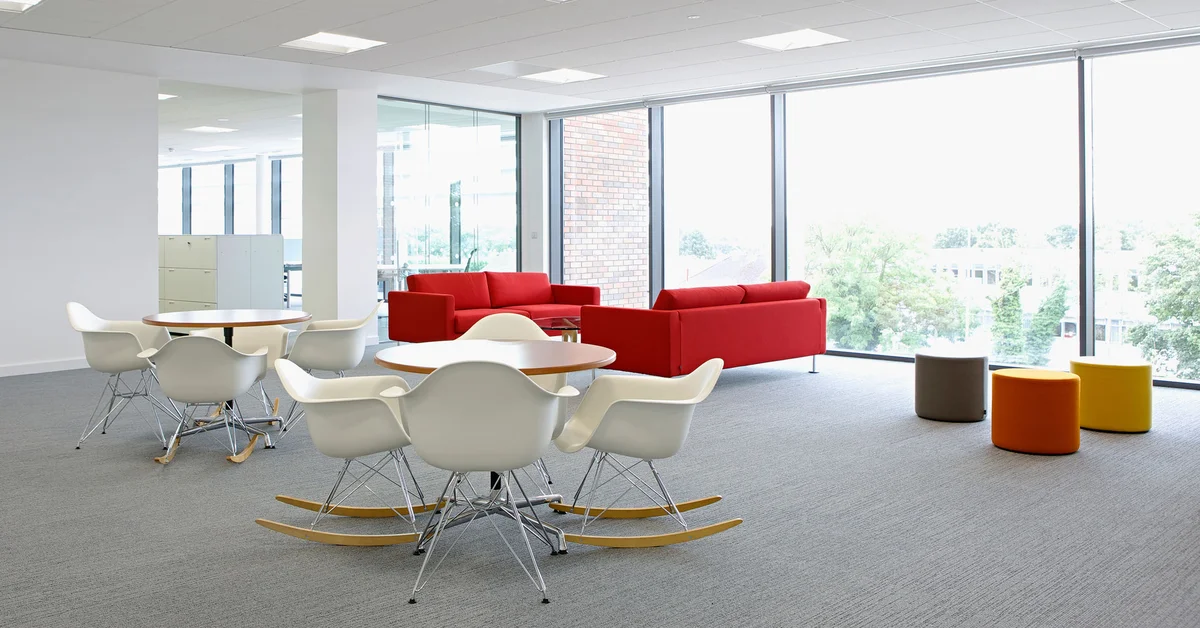Commercial Furniture:
Commercial furniture refers to furnishings specifically designed and manufactured for non-residential environments, such as businesses, offices, hospitality establishments, healthcare facilities, educational institutions, and public spaces. Unlike residential furniture, commercial furniture is crafted to meet the demands of high-traffic settings while also prioritizing functionality, durability, and aesthetic appeal.
Advantages of Commercial Furniture:
Commercial furniture offers several advantages that cater to the specific needs of non-residential spaces:
- Durability: Commercial furniture is built to withstand frequent use and the wear and tear of busy environments, ensuring longevity and minimizing replacement costs.
- Functionality: Designed with the intended purpose in mind, commercial furniture meets specific functional requirements. It includes features like storage solutions, ergonomic designs, and technology integration.
- Aesthetics: Commercial furniture enhances the visual appeal of spaces while aligning with the overall design and branding of the establishment. It contributes to creating a cohesive and inviting atmosphere.
- Customization: Many commercial furniture pieces can be customized to match the unique design preferences and brand identity of businesses, allowing for a tailored and cohesive look.
- Comfort: Ergonomic considerations ensure that commercial furniture provides optimal comfort for extended periods of use, enhancing user experience and productivity.
- Safety and Compliance: Commercial furniture often adheres to safety and regulatory standards, ensuring fire code compliance, durability, and accessibility.
- Space Optimization: Commercial furniture in Singapore is designed to maximize space usage efficiently, allowing businesses to accommodate more people without overcrowding.
- Versatility: Furniture designed for commercial spaces is versatile and adaptable to different layouts and configurations, allowing for easy reorganization as needs change.
Key Points of Commercial Furniture:
Understanding the key points of commercial furniture helps businesses make informed decisions when choosing furnishings for their spaces:
Targeted Design:
Commercial furniture is designed for specific settings and industries, whether it’s office cubicles, restaurant booths, or hospital waiting areas.
Material Selection: Durable and easy-to-maintain materials like metal, wood, upholstery, and plastics are chosen based on their suitability for commercial environments.
Ergonomics:
Comfortable seating and workspace solutions prioritize ergonomic design to enhance user comfort and well-being.
Durability:
Commercial furniture is built to withstand heavy usage, making it resilient against wear and tear over time.
Customization:
Customization options allow businesses to tailor furniture to their branding and design preferences, creating a cohesive look.
Functionality:
Furniture is designed to fulfill specific functional requirements, such as storage, technology integration, and space optimization.
Compliance:
Commercial furniture often adheres to safety, fire, and accessibility standards set by relevant authorities.
Aesthetics:
Aesthetic considerations ensure that commercial furniture contributes to the overall visual appeal and ambiance of the space.
Long-Term Investment:
While commercial furniture might have a higher upfront cost, its longevity and durability make it a cost-effective long-term investment.
Partnerships:
Businesses often form partnerships with reliable suppliers and manufacturers to ensure consistent quality and timely deliveries.
Incorporating commercial furniture into non-residential spaces offers numerous advantages, combining functionality, durability, and aesthetics to create comfortable and appealing environments for employees, customers, patients, students, and visitors.
let’s explore seven intriguing and lesser-known facts about commercial furniture, each discussed in detail with headings:
1. Acoustic Furniture for Noise Management:
Acoustic commercial furniture is designed to absorb and control sound, contributing to a more comfortable and productive environment. These furnishings incorporate specialized materials and designs that help reduce noise levels, making them ideal for open office spaces, restaurants, and public areas where noise control is essential.
2. Biophilic Design and Nature-Inspired Furniture:
Biophilic design is a growing trend that integrates natural elements into commercial spaces to enhance well-being. Biophilic commercial furniture includes pieces inspired by nature, such as chairs with organic shapes, tables resembling tree stumps, and textured materials that evoke natural environments.
3. Dynamic Seating for Active Workspaces:
Dynamic seating encourages movement while sitting, promoting better posture and comfort. Commercial furniture like wobble stools, balance chairs, and standing desks engage muscles, improve circulation, and increase focus, making them popular choices for modern, active workspaces.
4. Modular and Reconfigurable Furniture:
Modular commercial furniture offers versatility through interchangeable components that can be rearranged to suit various layouts. This adaptability is especially useful for evolving office spaces and dynamic environments where furniture needs can change frequently.
5. Collaborative Furniture for Interaction:
Collaborative furniture fosters interaction and teamwork by providing comfortable and flexible seating arrangements. Examples include circular seating pods, cluster tables, and lounge-style furnishings that encourage spontaneous conversations and brainstorming.
6. Sit-to-Stand Desks for Ergonomic Work:
Sit-to-stand desks, also known as height-adjustable desks, enable users to switch between sitting and standing positions. This helps reduce sedentary behavior, improve posture, and increase energy levels, contributing to a healthier and more comfortable workspace.
7. Digital Integration in Furniture:
Technology-integrated commercial furniture combines traditional furnishings with modern technology. Examples include charging stations built into seating, tables with built-in touchscreens for ordering in restaurants, and interactive whiteboard furniture for collaborative meetings.
These strange yet fascinating facts showcase the diverse and innovative aspects of commercial furniture. From enhancing acoustic environments to integrating nature-inspired designs, commercial furniture is continually evolving to cater to the changing needs and preferences of modern workplaces, hospitality establishments, and public spaces.








